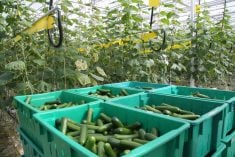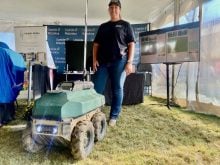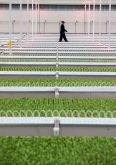Determining the chemical composition of raw materials is important for production efficiency, application and price in the agricultural and food industries. Traditional laboratory testing is time-consuming, complicated and expensive.
New research from the University of Illinois Urbana-Champaign demonstrates that near-infrared spectroscopy (NIR) and machine learning can provide quick, accurate and cost-effective product analysis.
In two studies, researchers explored the use of spectroscopy for analyzing characteristics of corn kernels and sorghum biomass.
Read Also

The forced Japanese-Canadian farmers of the Second World War
Manitoba’s sugar beet farms drew on displaced Japanese-Canadians from B.C. during the Second World War
In the first study, they created a global model for corn kernel analysis. Moisture and protein content affect nutritional value, processing efficiency and the price of corn, so the information is crucial for the grain processing industry.
NIR and other spectroscopic techniques are indirect methods. They measure how a material absorbs or emits light at different wavelengths, then construct a unique spectrum that is translated into product characteristics with machine learning models. Many food and agricultural processing facilities already have NIR equipment, but models need to be trained for specific purposes.
“Corn grown in different locations varies because of soil, environment, management and other factors. If you train the model with corn from one location, it will not be accurate elsewhere,” said Mohammed Kamruzzaman, assistant professor in the agricultural and biological engineering department.
To address this issue and develop a model that applies in many different locations, the researchers collected corn samples from seven countries: Argentina, Brazil, India, Indonesia, Serbia, Tunisia, and the U.S.
“To analyze moisture and protein in the corn kernels, we combined gradient-boosting machines with partial least squares regression. This is a novel approach that yields accurate, reliable results,” said doctoral student Runyu Zheng.
While the model is not 100 per cent global, it provides considerable variability in the data and will work in many locations. If needed, it can be updated with additional samples from new locations, Kamruzzaman said.
In the second study, researchers focused on sorghum biomass, which can serve as a renewable, cost-effective and high-yield feedstock for biofuel.
Biomass conversion into biofuels depends on chemical composition, so a rapid and efficient method of sorghum biomass characterization could assist biofuel, breeding, and other relevant industries, the researchers said.
Using sorghum from the University of Illinois Energy Farm, they were able to accurately and reliably predict moisture, ash, lignin and other features.
First, the researchers scanned the samples and obtained NIR spectra. The spectra is unique to different chemical compositions and structural properties. Then they used chemometrics, a mathematical-statistical approach, to develop the prediction models and applications.
While NIR spectroscopy is not as accurate as lab analysis, it is more than sufficient for practical purposes and can provide fast, efficient screening methods for industrial use, Kamruzzaman said.
“A major advantage of this technology is that you don’t need to remove and destroy products. You can simply take samples for measurement, scan them, and then return them to the production stream.
“In some cases, you can even scan the samples directly in the production line. NIR spectroscopy provides a lot of flexibility for industrial usage.”














